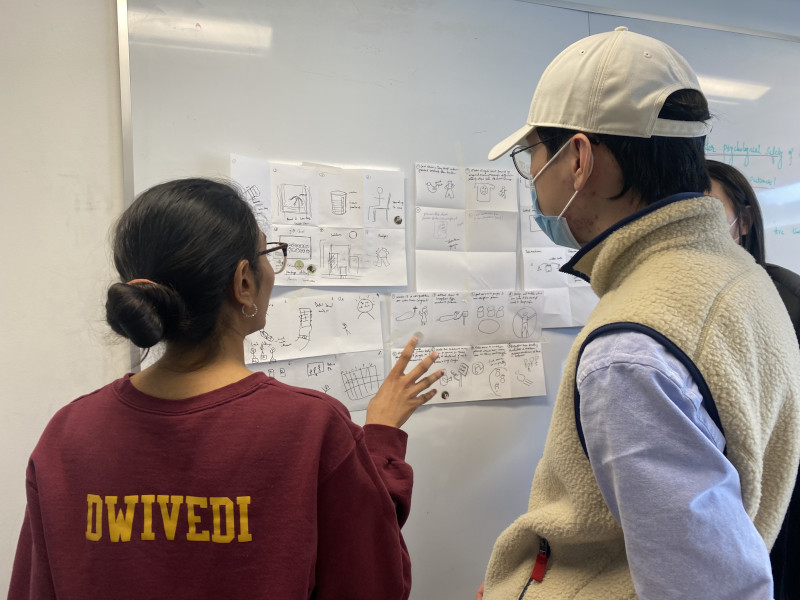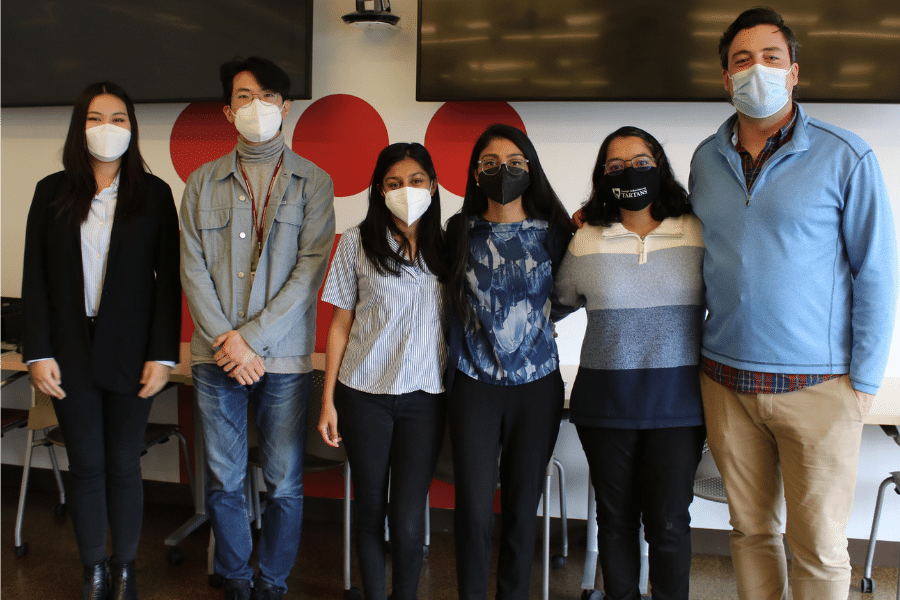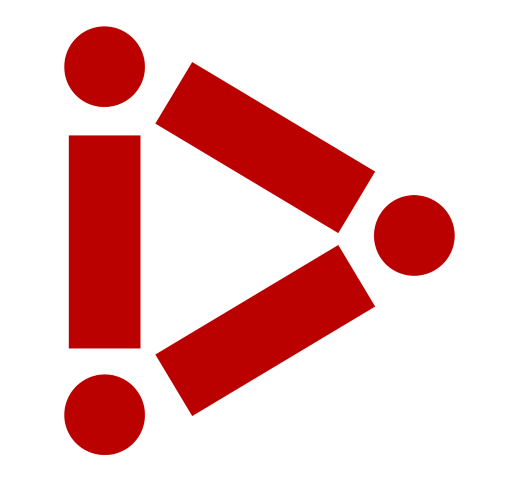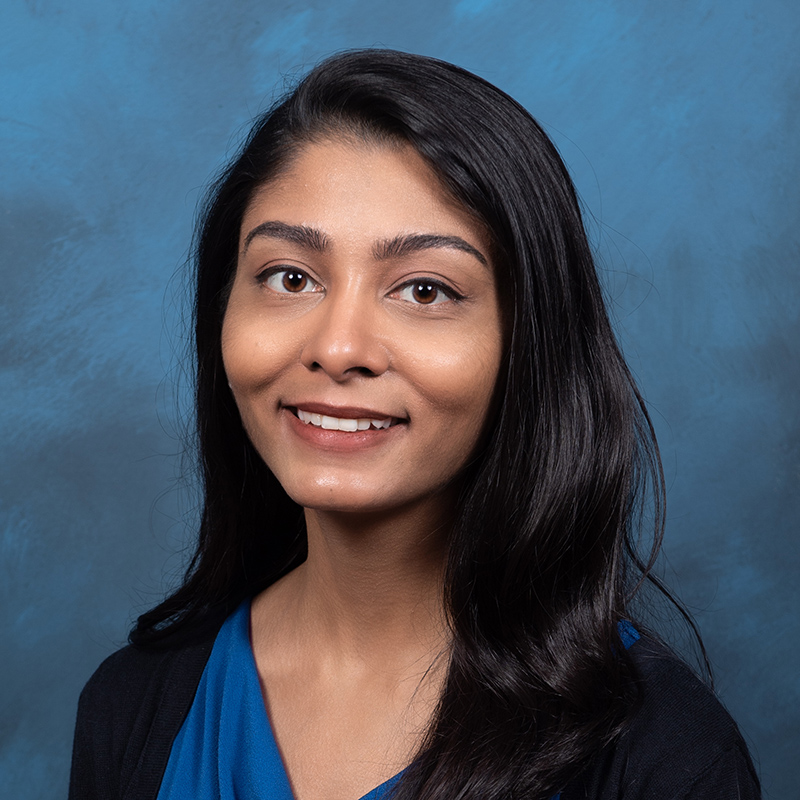A Steward of Innovation in Healthcare
As an Innovations Engagement Partner at the Cleveland Clinic, Neha Dwivedi works at the frontend of the innovation pipeline, supporting clinician-innovators and their ideas.
By Mary Kilcoyne
Growing up, Neha Dwivedi had a strong affinity for both math and science. Her interest in math and physics made engineering a contender for higher education, but a career in medicine ranked high too - an opportunity to satisfy interests in biology and chemistry.
Dwivedi chose both while choosing neither.
“I figured why not focus on something that brought them all together?” Dwivedi recalled.
Dwivedi pursued her undergraduate degree in Biomedical Engineering with a focus in biomaterials and tissue engineering at Case Western Reserve University.
While a student, she worked in a tissue engineering lab that conducted research on bone and cartilage regeneration using stem cells. She often found herself contemplating the path from benchside to bedside and how the technology could ultimately impact patient care.
Between applying to Ph.D. programs or acquiring industry experience, Dwivedi picked the latter to gain exposure to the translational and commercial side of the medical industry.
She worked at MIM Software, a medical software company that builds clinical-decision support and workflow tools for radiologists and radiation oncologists.
Dwivedi managed several software implementation projects at hospitals in the US and internationally and led education on new product strategy for the company’s distributors in Japan and Australia.
“Visiting hospitals, working directly with clinicians, administrators and hospital IT teams gave me an appreciation for the complexities within healthcare and the importance of effective communication and stakeholder management. In 2019, I was tapped to lead the incubation and roll out of a brand new product in the company’s radiation oncology portfolio,” Dwivedi said.
“That experience led me to discover my passion for new product development and product management, which ultimately led me to MIIPS so I could further develop my product management skills,” Dwivedi said.
While in the MIIPS Program, Dwivedi was especially drawn to user research methods, human-centered design, and design thinking within the context of designing new products and services.
“After CMU, I knew I wanted to work in an environment that gave me a front-seat view of pressing problems facing healthcare, in a role where I could help identify and prioritize problems, and frame opportunities for innovation in healthcare,” Dwivedi said.
Today, as an Innovations Engagement Partner at the Cleveland Clinic, Dwivedi works at the frontend of its innovation pipeline by supporting clinician-innovators to kick off their idea-to-commercialization journey.
She first meets with the innovator – who could be a physician, nurse, technician, researcher, administrator, etc. – to understand the problem they are trying to tackle, its prevalence, and the impact the proposed solution could have.
"It's a common tendency to focus on building the perfect solution. Consequently, solutions in industry are often force fit to problems that may or may not be a priority for the user. The MIIPS Program has ingrained in me the habit of asking a lot of questions about the problem first before I move on to evaluate the solution."
Once she understands the problem or unmet clinical need, Dwivedi dives into market research, conducting a competitive analysis and determining what opportunity gap – if any – the proposed solution is fulfilling.
“I want the innovator to succeed, and I do my best to help them bring their idea to life. At a health system, you see ideas with tremendous potential to impact how care is delivered to patients. Ideas range from process improvements to new medical devices, digital solutions, new diagnostic tools and therapeutics. One of my core responsibilities is to partner with the innovator and assess if their idea has commercial potential."
Dwivedi’s assessment focuses on evaluating if an idea is desirable, feasible, and viable and then formulating a strong value proposition statement.
“It takes time to frame the right value proposition and several iterations to arrive at one sentence that captures the essence of how the proposed solution generates value in a meaningful and unique way for the end-user,” Dwivedi said.
Dwivedi's work reminds her, at times, of her experience during the Intregated Product Development (IPD) Capstone in which she and her team were assigned to medical device company Vapotherm.
“Our sponsor was interested in creative approaches to the original problem statement. We tried to understand what living with COPD feels like and what’s deemed important by physicians and therapists taking care of COPD patients. We also looked at the market landscape for the opportunity gaps. Once we’d narrowed down the problem to go after, we kicked off ideation sessions, which were very exciting. We did parallel prototyping to leverage everyone’s creativity on the team before finally choosing which idea to pitch,” Dwivedi said.

Coincidentally, the team’s first solution was not commercially viable, so they pivoted before the final pitch.
“It was such a cool exercise to collaborate because everyone on the team had such different perspectives. Plus, we got to work on something with the potential for real impact,” Dwivedi said.
“Actually, that’s what drew me to MIIPS. I wanted to learn from people from different educational backgrounds. I didn’t want to get another engineering degree and also knew I didn’t want to just focus on business. I loved that MIIPS was multi-disciplinary - bringing together design, engineering, and business courses. In any product management or product strategy role, skills across these three domains are critical, so MIIPS felt like a perfect fit."

From left: Mengru Li, Cheng Zhou, Kanika Tibrewala, Neha Dwivedi, Tanya Sandeep Gupta, and Virgil Looney

